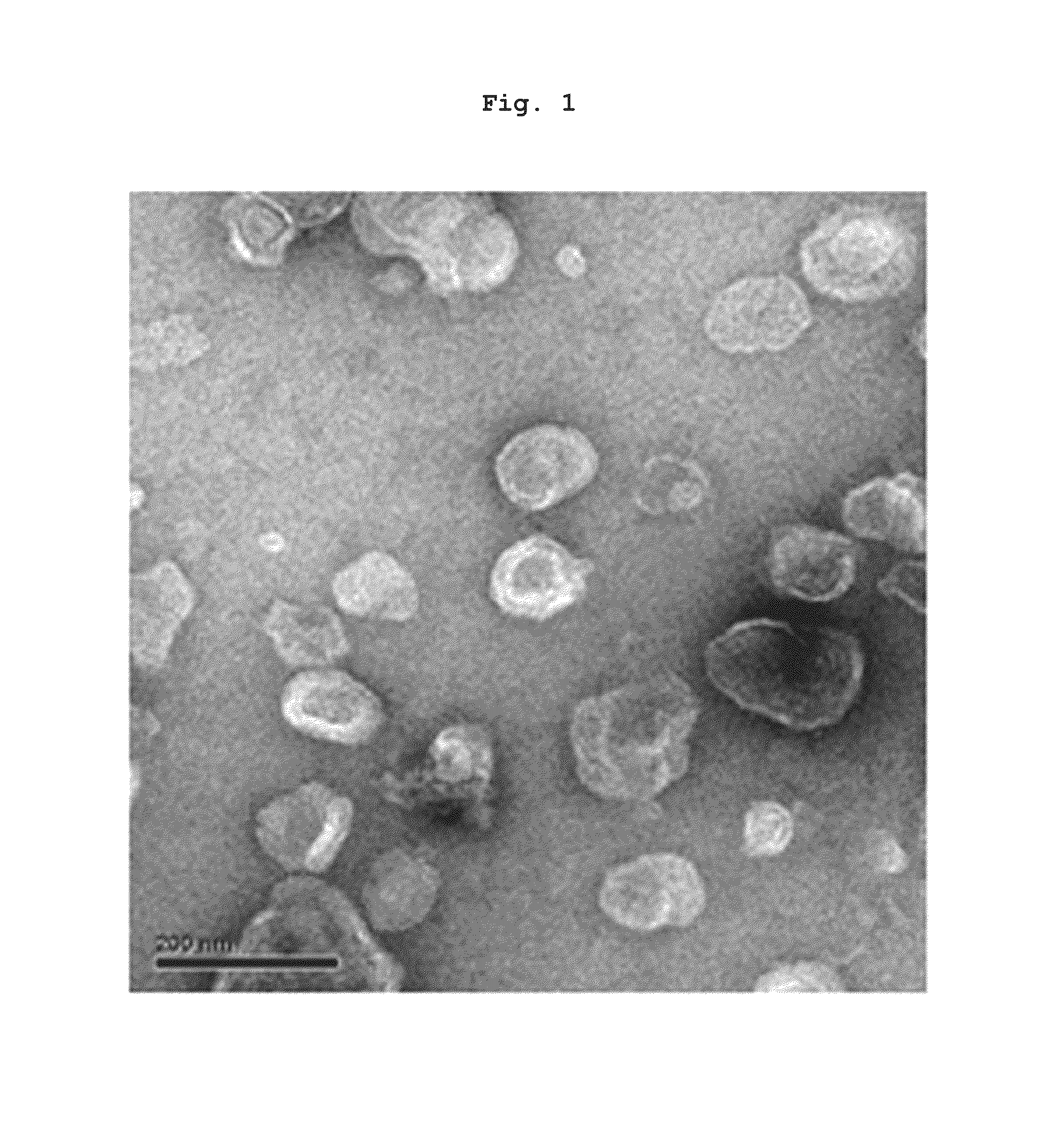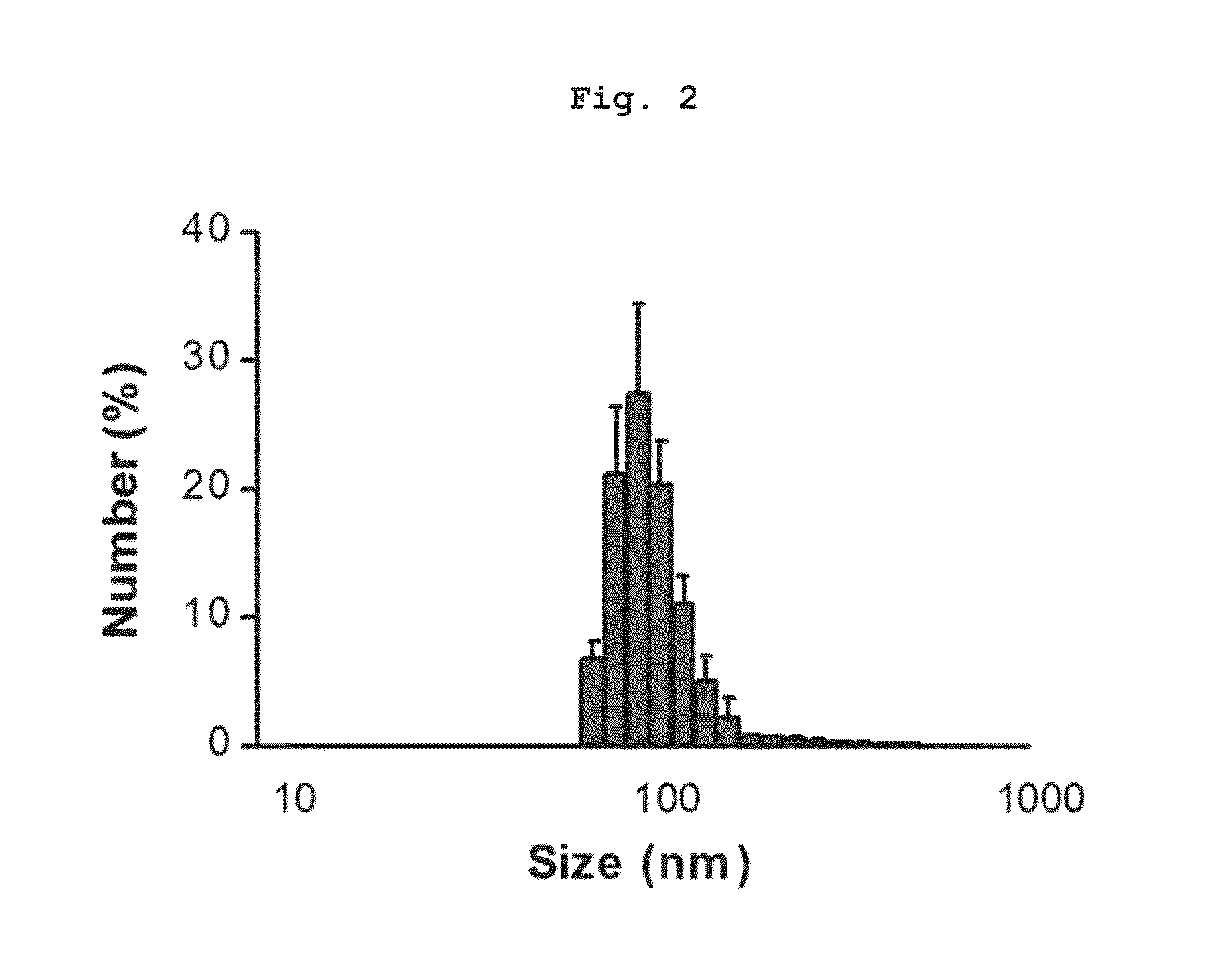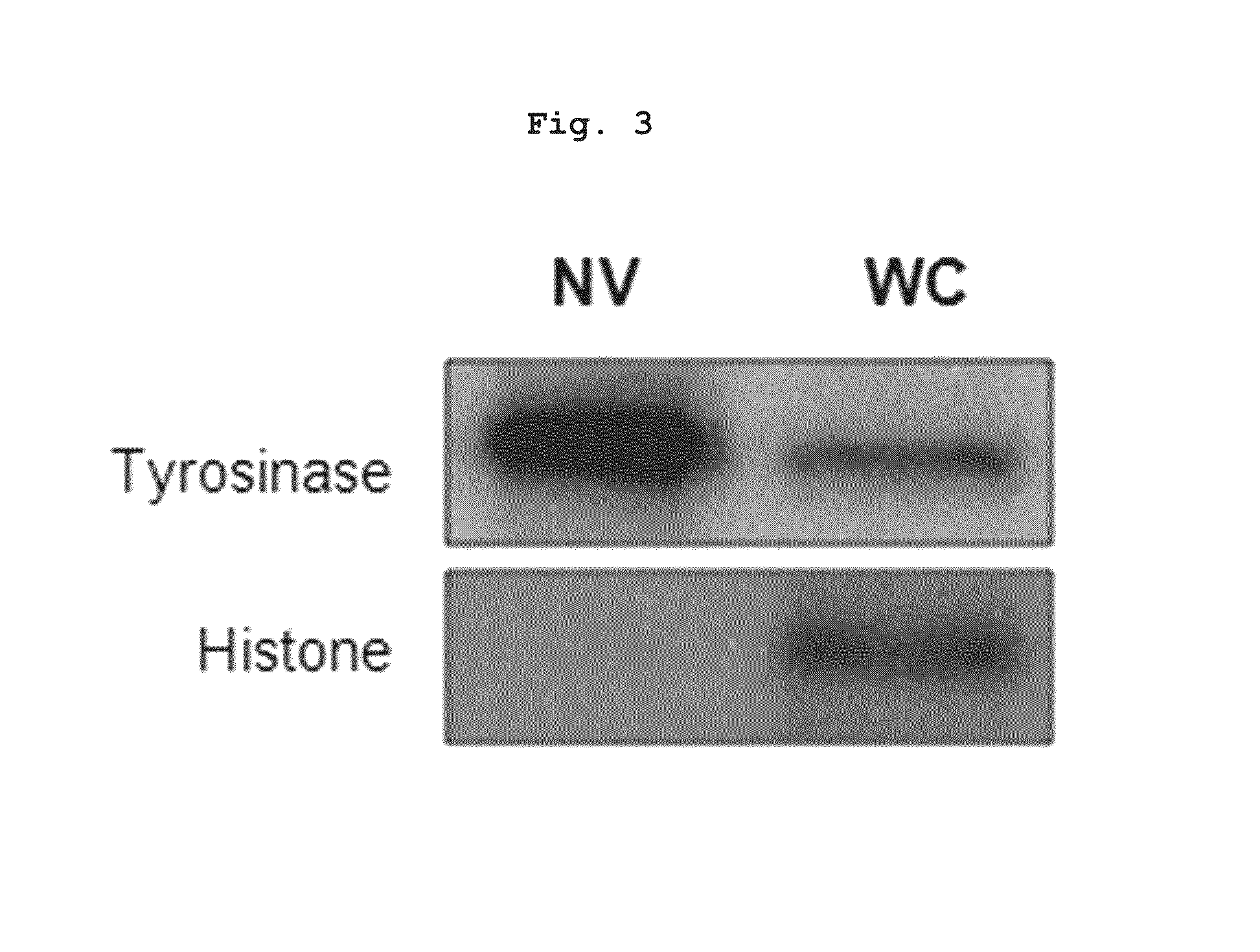Nano-vehicle derived from tumor tissue, and cancer vaccine using same
a tumor and tumor technology, applied in the field of cancer vaccines, can solve the problems of affecting the production efficiency of cancer vaccines, and affecting the effect of anticancer activity, etc., and achieves the effects of low production yield, difficult separation and preparation, and low production yield
- Summary
- Abstract
- Description
- Claims
- Application Information
AI Technical Summary
Benefits of technology
Problems solved by technology
Method used
Image
Examples
example 1
Preparation of Nanovesicles from Melanoma Cells Using Sonication and Their Characterization
[0055]The melanoma cell line (B16BL6) was subcutaneously injected into mice (C57 / BL6, female), cultured for 2˜3 weeks to a mass size of 1.0˜1.5 cm, and then tumor tissues were obtained by surgical excision. The melanoma tissue was ground and passed through a 45 μm filter for homogenization, followed by incubation at 4° C. for 30 min in a hypotonic solution. Then, the filtrate was homogenized with 100 strokes of a homogenizer and the homogenate was adjusted to have a final salt concentration of 150 mM to form vesicles. Centrifugation at 500×g for 10 min removed nucleoproteins and intact cells as a pellet, and the supernatant was sonicated for 30 min in a water bath sonicator to form nano-sized vesicles which were constant in size. Subsequently, cell debris and mitochondria were removed by centrifugation at 10,000×g for 20 min. After being collected, the supernatant was adjusted into a volume of...
example 2
Preparation of Nanovesicles from Colorectal Cancer Cells Using Sonication and Their Characterization
[0057]The colorectal cell line (Colon26) was subcutaneously injected into mice (BALB / C, female), cultured for 2˜3 weeks to a mass size of 1.0˜1.5 cm, and then tumor tissues were obtained by surgical excision. The same procedure as in Example 1 was repeated. That is, the colorectal cancer tissue was ground and filtered for homogenization, followed by incubation at 4° C. for 30 min in a hypotonic solution. Then, the filtrate was homogenized with 100 strokes of a homogenizer and the homogenate was adjusted to have a final salt concentration of 150 mM to form vesicles. Centrifugation at 500×g for 10 min removed nucleoproteins and intact cells as a pellet, and the supernatant was sonicated for 30 min in a water bath sonicator to form nano-sized vesicles which were constant in size. Subsequently, cell debris and mitochondria were removed by centrifugation at 10,000×g for 20 min. After being...
example 3
Preparation of Nanovesicles from Melanoma Cells Using Extrusion and Their Characterization
[0058]The melanoma cell line (B16BL6) was subcutaneously injected into mice (C57 / BL6, female), cultured for 2˜3 weeks to a mass size of 1.0˜1.5 cm, and then tumor tissues were obtained by surgical excision. The melanoma tissue was ground and passed through a 45 μm filter for homogenization, followed by incubation at 4° C. for 30 min in a hypotonic solution. Then, the filtrate was homogenized with 100 strokes of a homogenizer and the homogenate was adjusted to have a final salt concentration of 150 mM to form vesicles. Centrifugation at 500×g for 10 min removed nucleoproteins and intact cells as a pellet, and the supernatant was rendered to pass three times through a membrane filter with a pore size of 1 μm and then three times through a membrane filter with a pore size of 0.4 μm. After being collected, the filtrate was adjusted into a volume of 10 ml, placed on a sucrose cushion comprising 0.1 ...
PUM
| Property | Measurement | Unit |
|---|---|---|
| size | aaaaa | aaaaa |
| size | aaaaa | aaaaa |
| volume | aaaaa | aaaaa |
Abstract
Description
Claims
Application Information
 Login to View More
Login to View More - R&D
- Intellectual Property
- Life Sciences
- Materials
- Tech Scout
- Unparalleled Data Quality
- Higher Quality Content
- 60% Fewer Hallucinations
Browse by: Latest US Patents, China's latest patents, Technical Efficacy Thesaurus, Application Domain, Technology Topic, Popular Technical Reports.
© 2025 PatSnap. All rights reserved.Legal|Privacy policy|Modern Slavery Act Transparency Statement|Sitemap|About US| Contact US: help@patsnap.com



